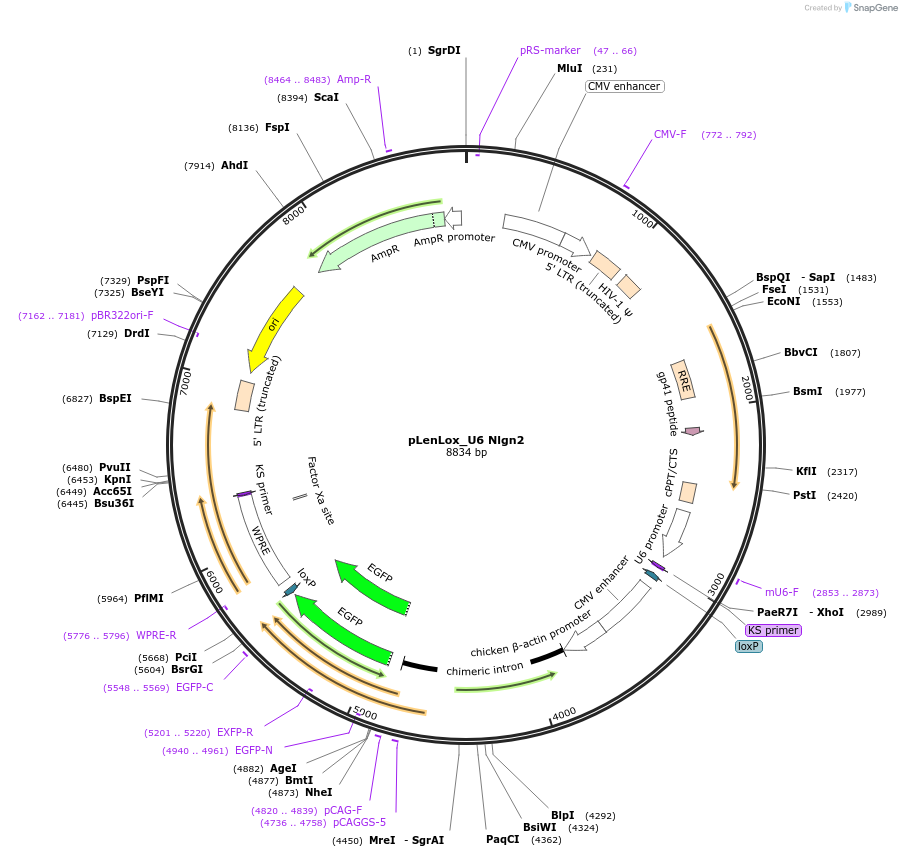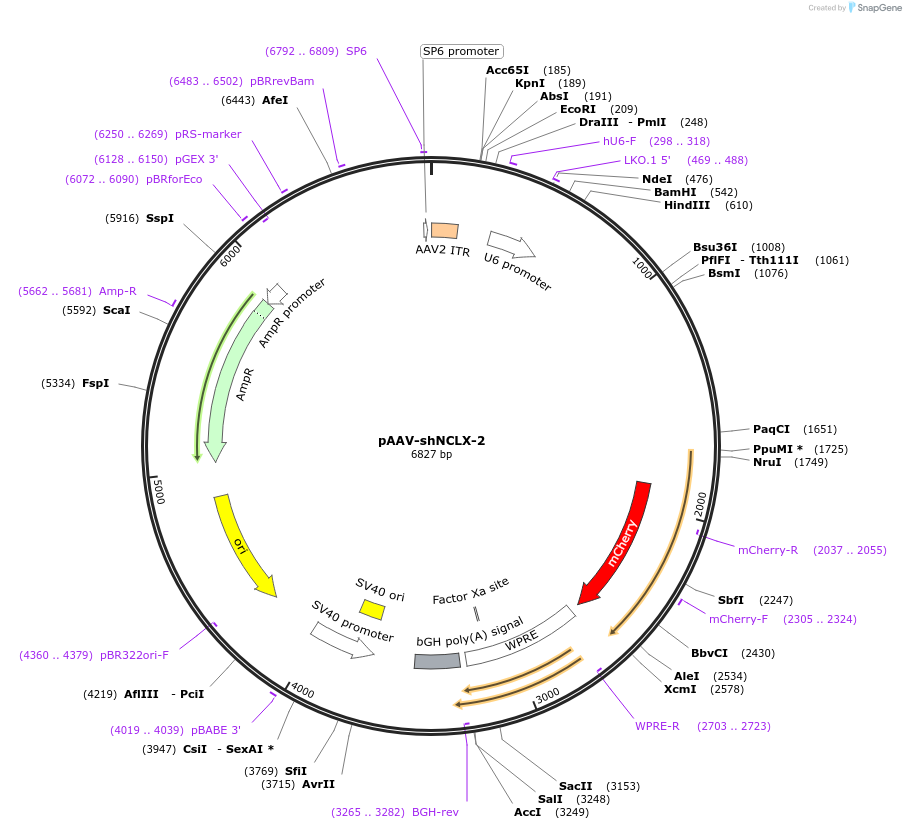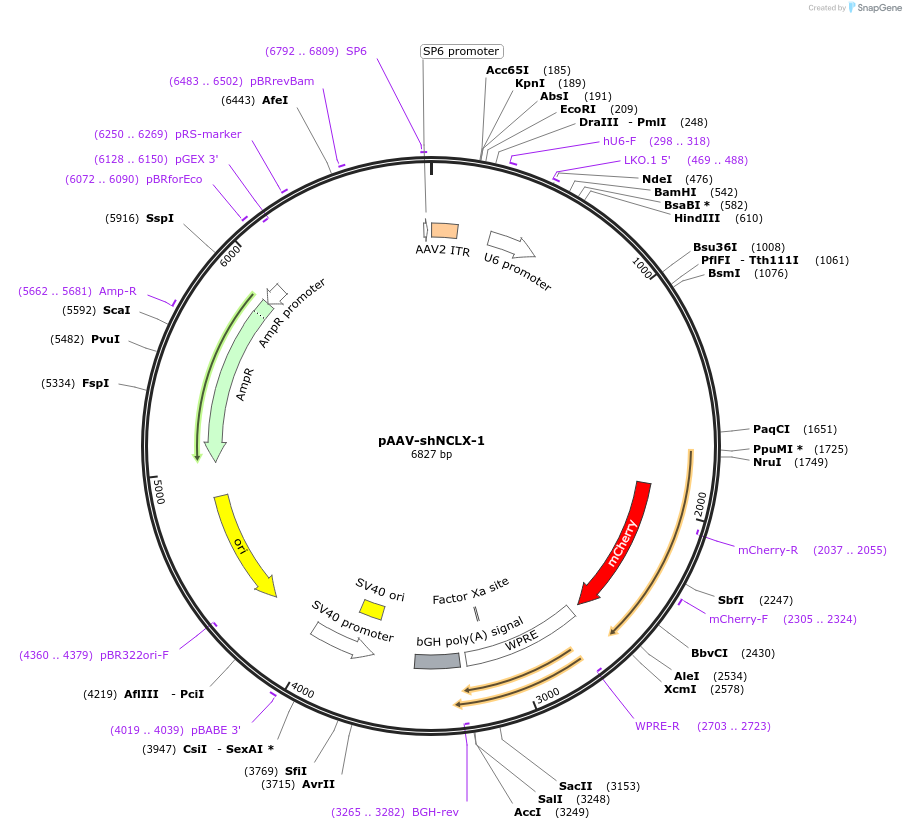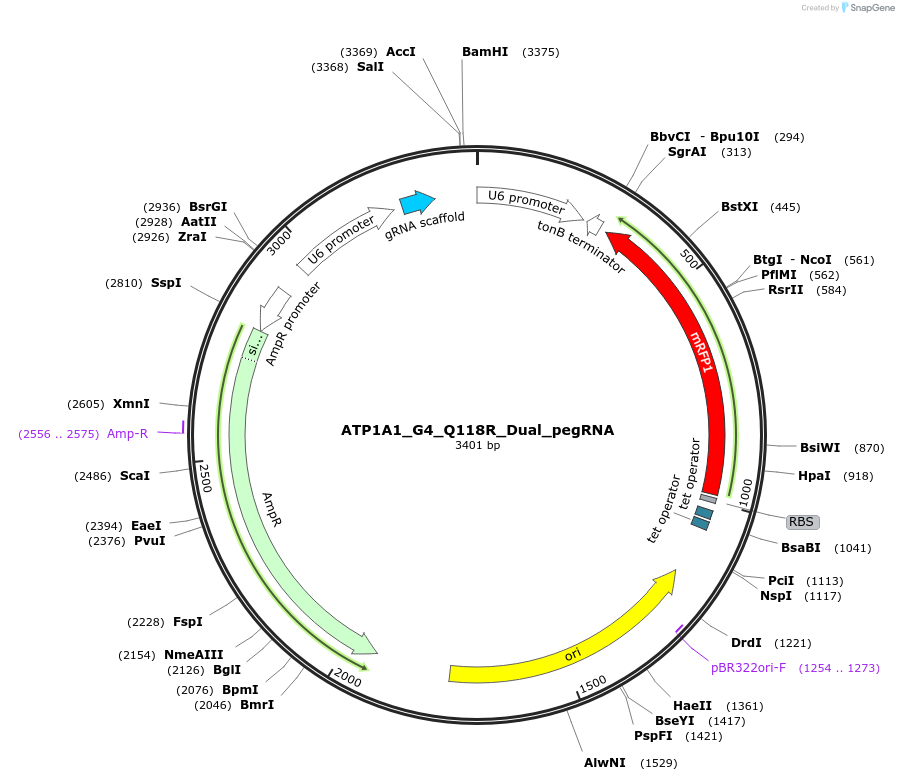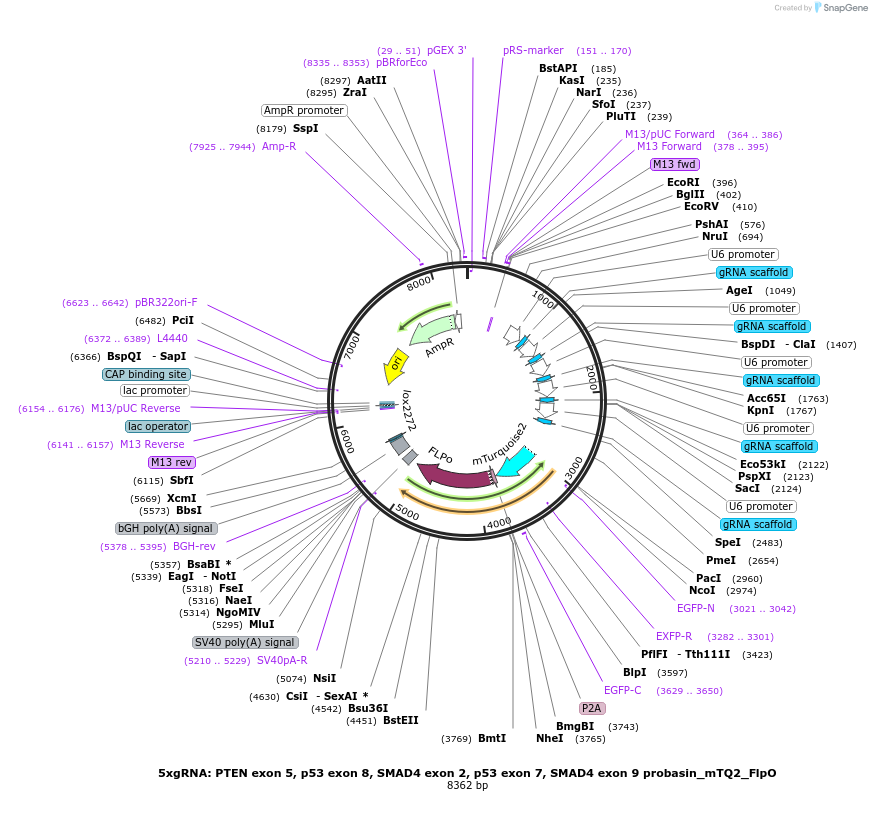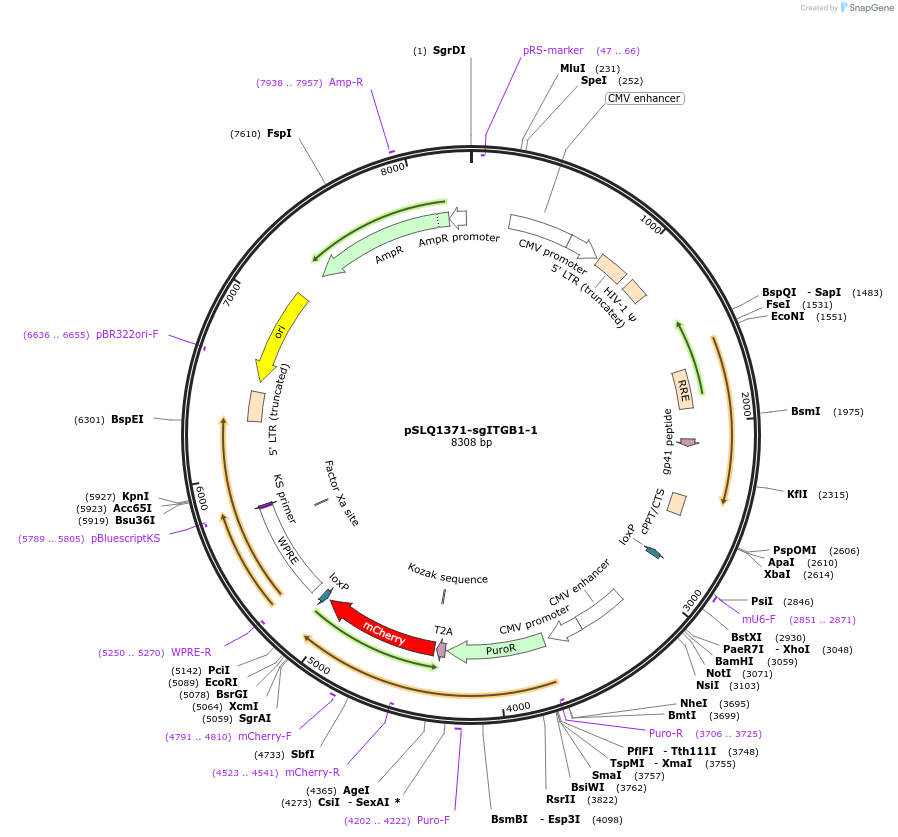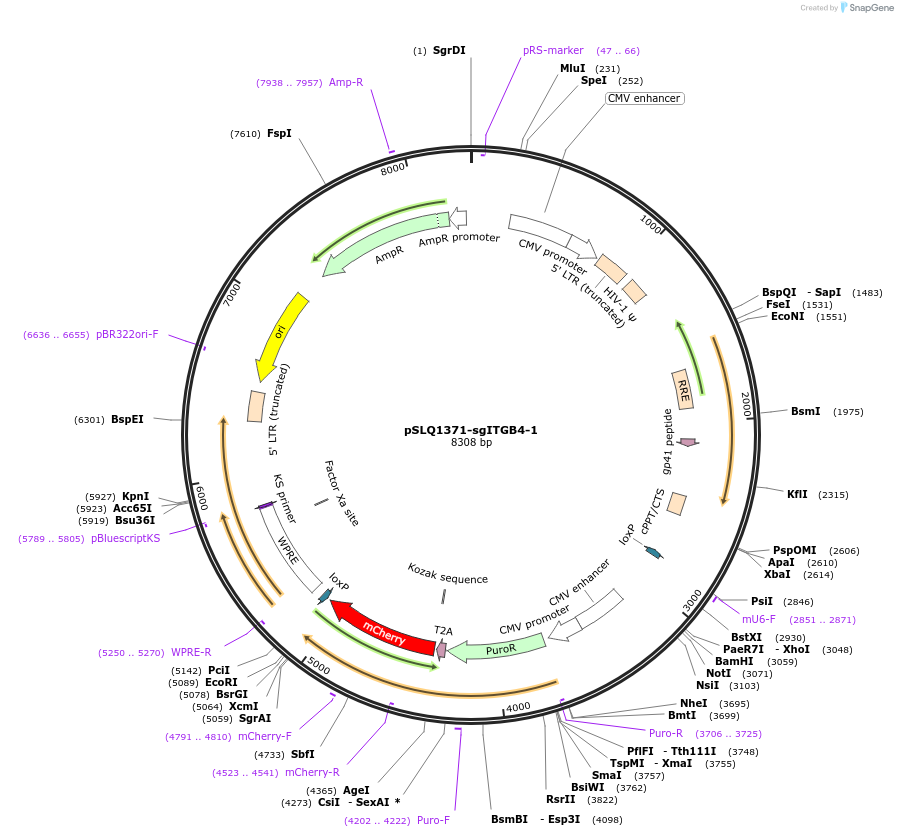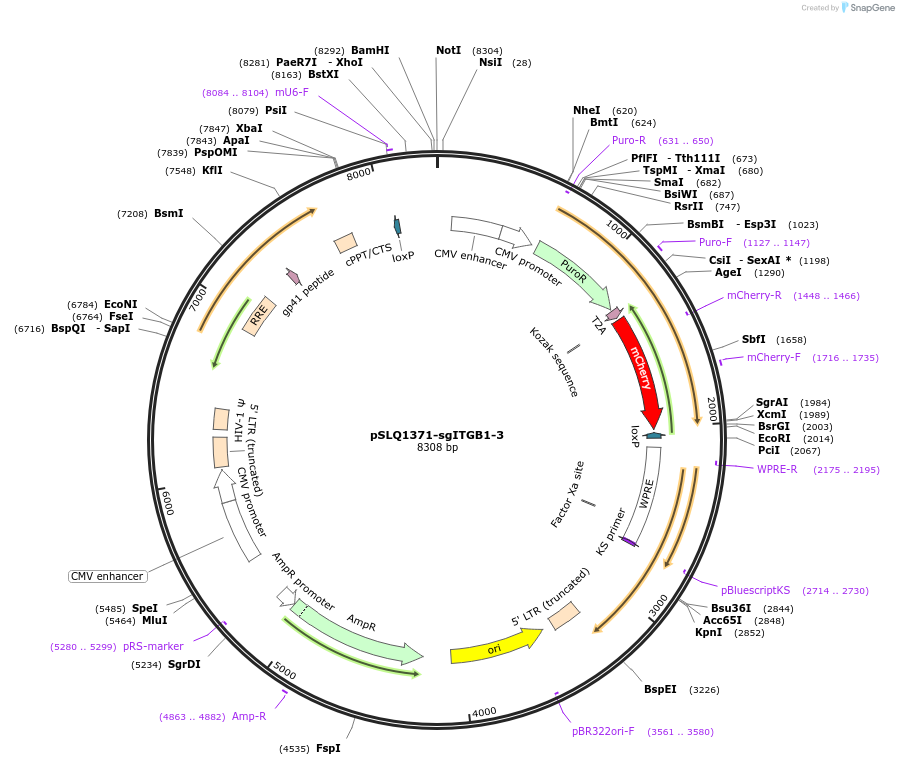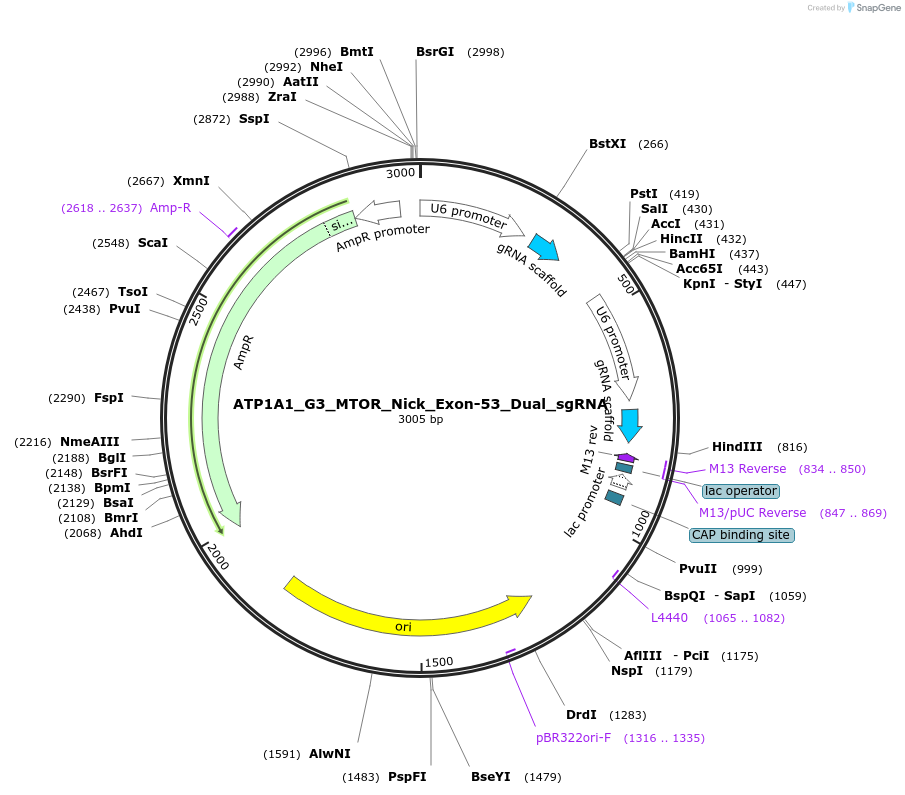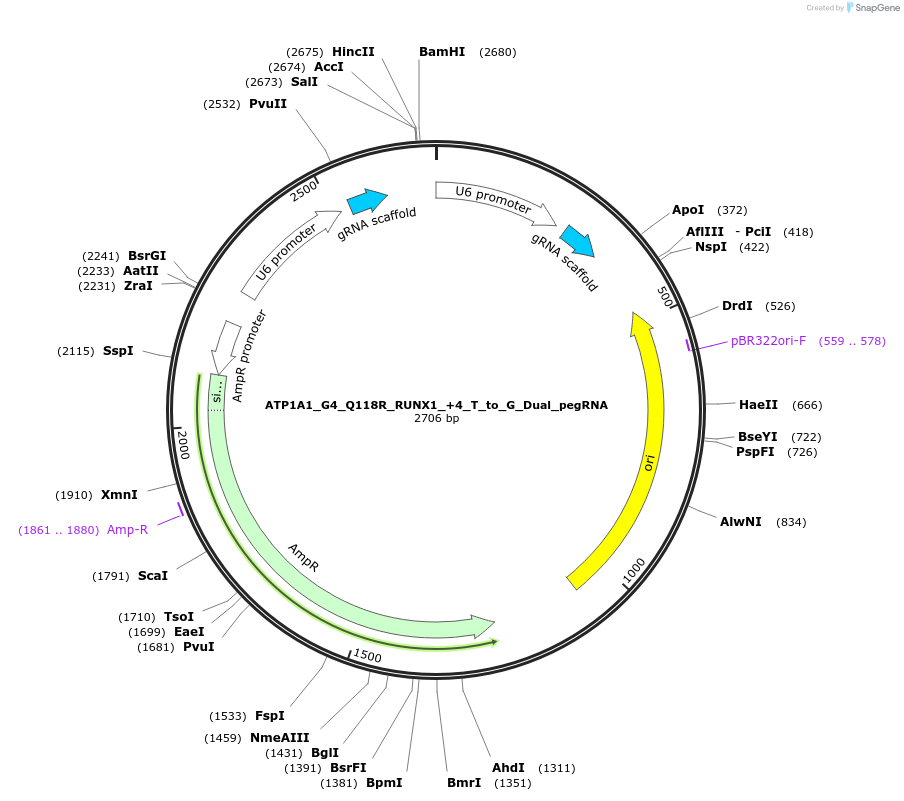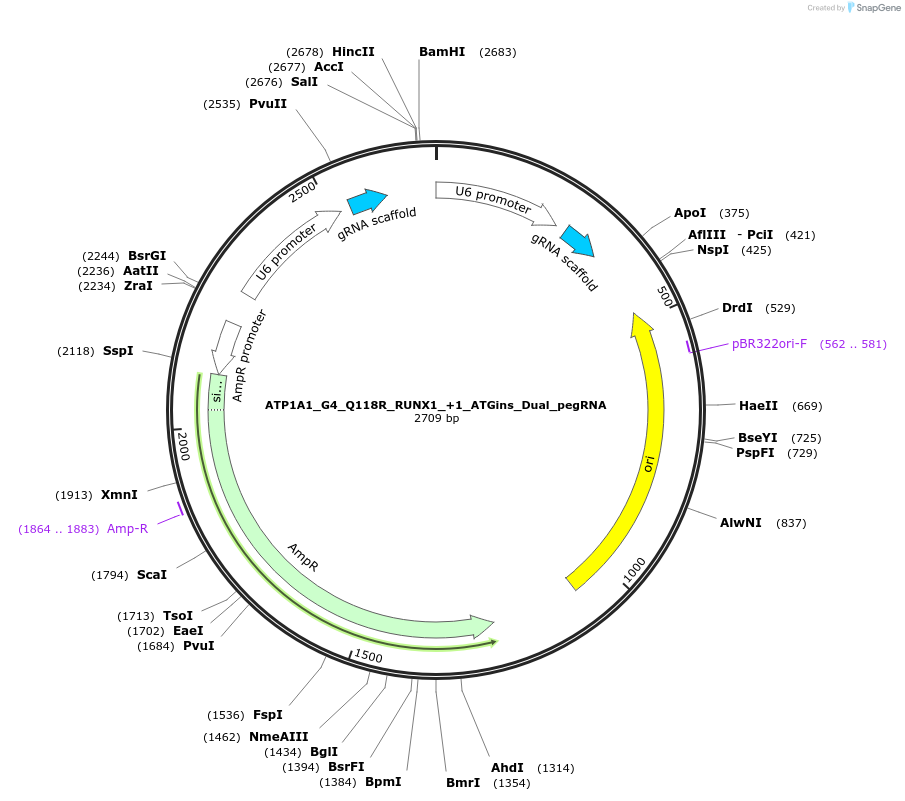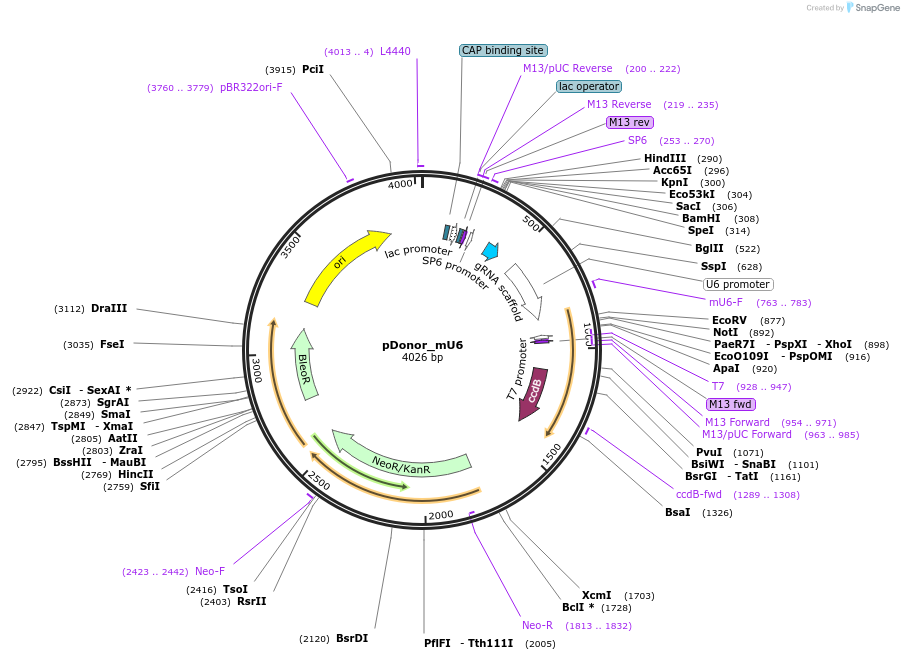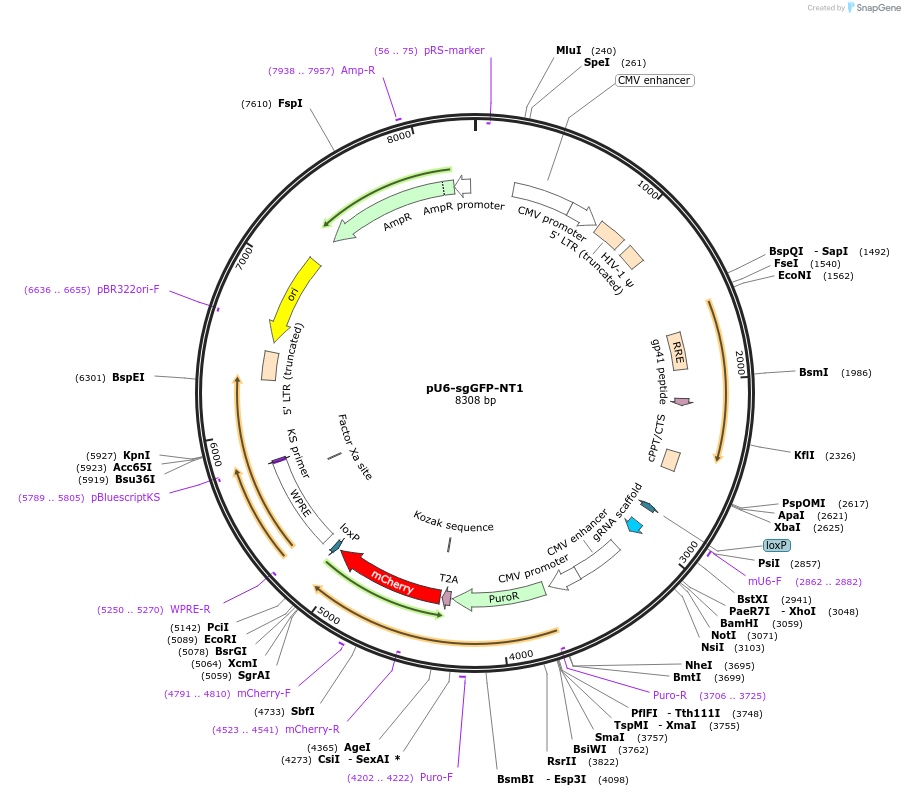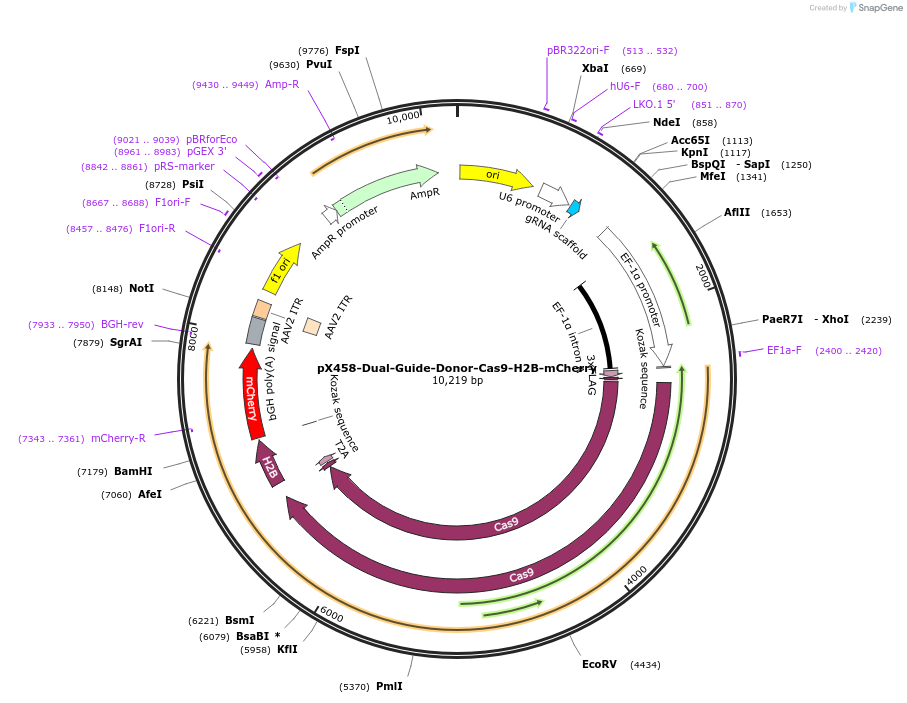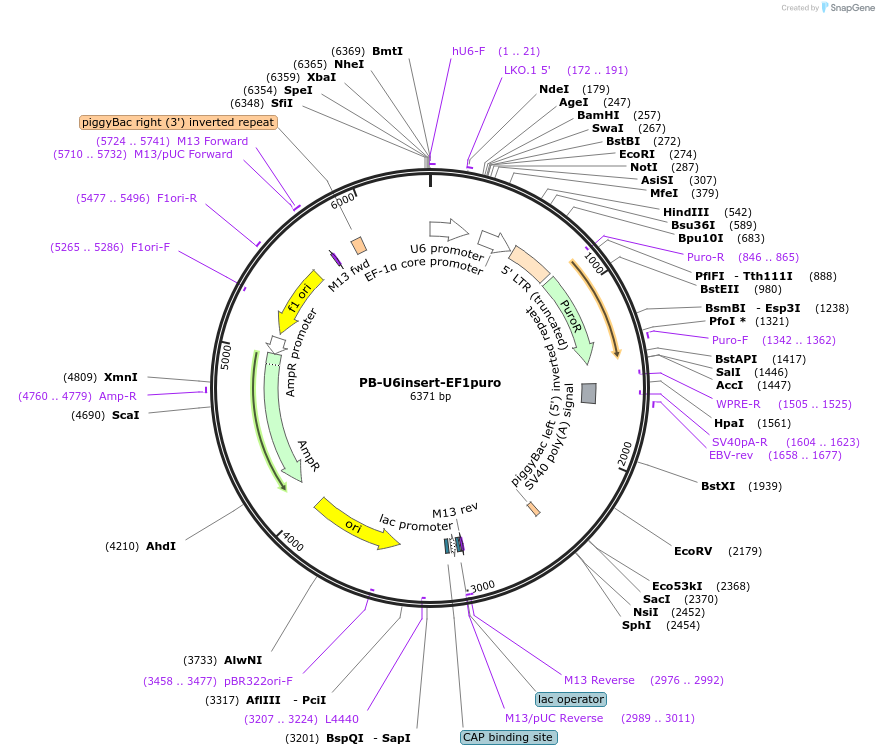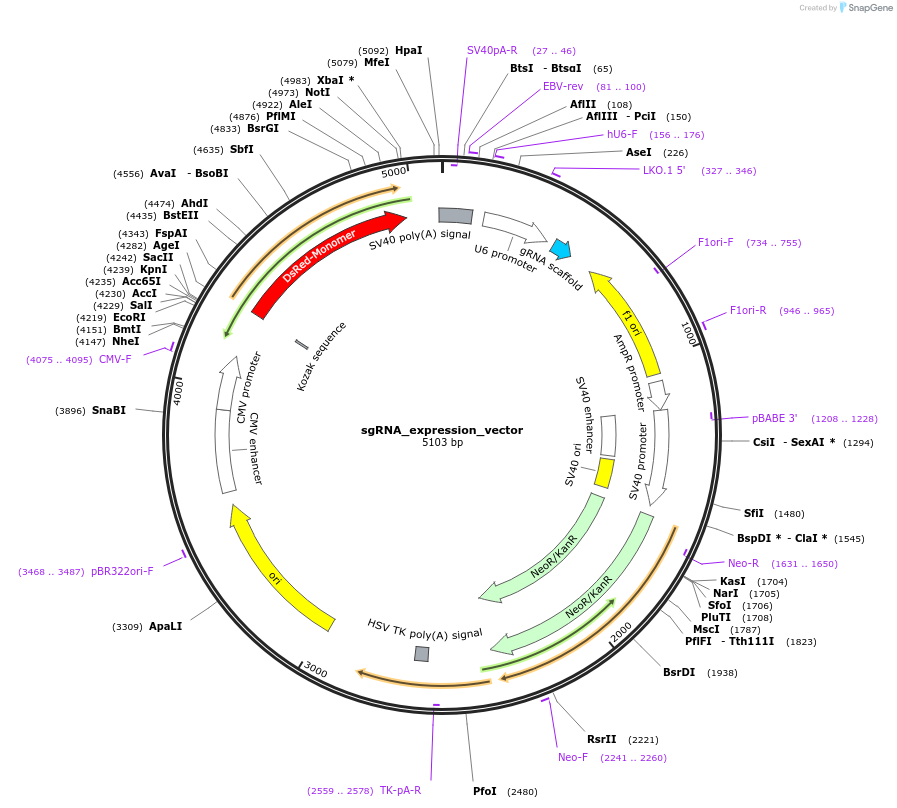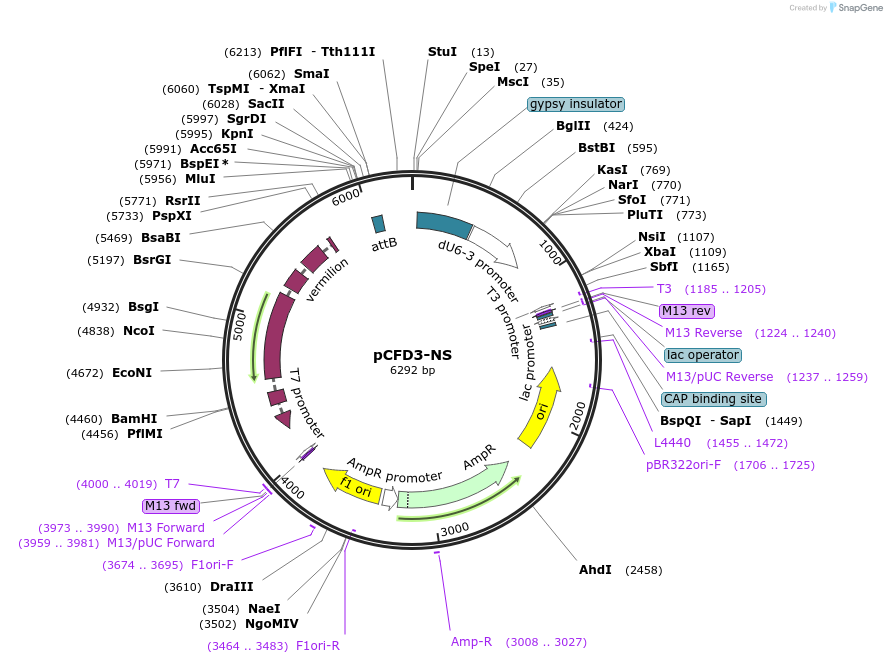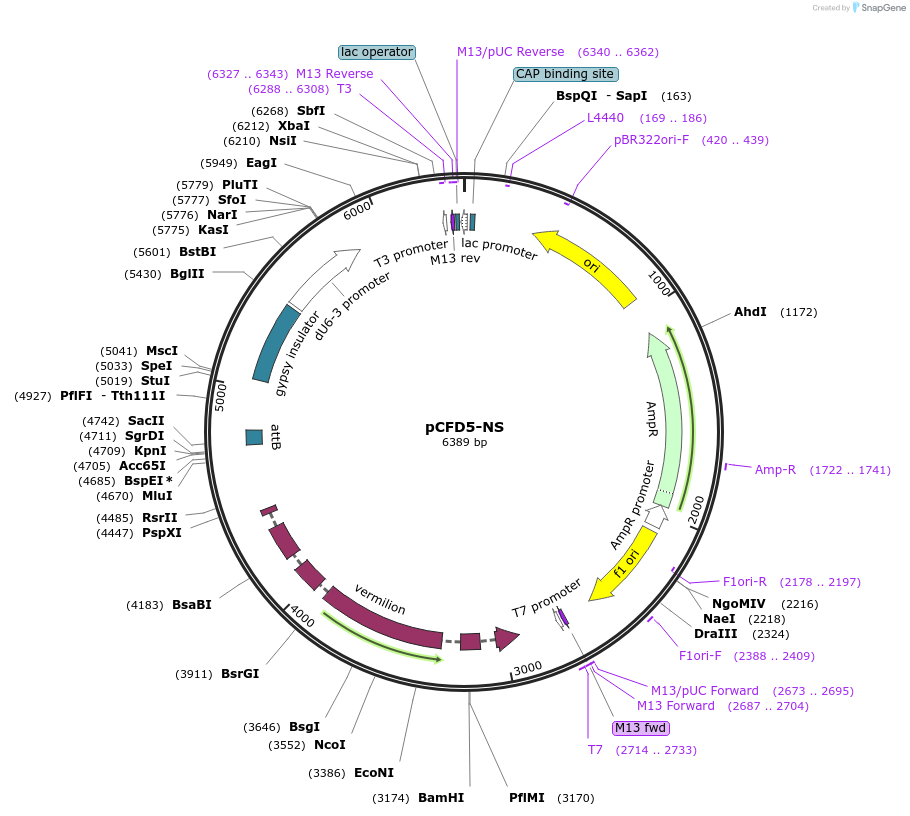We narrowed to 1,462 results for: U6 promoter
-
Plasmid#59358PurposeLentiviral expression vector: Neuroligin 2 shRNA under control of mouse U6 promoter, EGFP-expression driven by CAG promoter to monitor expression.DepositorUseLentiviralExpressionMammalianPromoterCAG and mouse U6Available SinceDec. 15, 2015AvailabilityAcademic Institutions and Nonprofits only
-
pAAV-shNCLX-2
Plasmid#181871PurposeExpresses NCLX-targeted shRNA under control of the U6 promoter and mCherry under control of the CaMKIIa promoterDepositorInsertsolute carrier 8 family member B1 (Slc8b1 Mouse)
UseAAV, Adenoviral, and Mouse TargetingTagsmCherryExpressionMammalianPromoterU6Available SinceMarch 17, 2022AvailabilityAcademic Institutions and Nonprofits only -
pAAV-shNCLX-1
Plasmid#181870PurposeExpresses NCLX-targeted shRNA under control of the U6 promoter and mCherry under control of the CaMKIIa promoterDepositorInsertsolute carrier 8 family member B1 (Slc8b1 Mouse)
UseAAV, Adenoviral, and Mouse TargetingTagsmCherryExpressionMammalianPromoterU6Available SinceMarch 17, 2022AvailabilityAcademic Institutions and Nonprofits only -
ATP1A1_G4_Q118R_Dual_pegRNA
Plasmid#173199PurposeCoselection for prime editing in human cells. Vector for tandem expression of ATP1A1 Q118R-G4 pegRNA with a user-specified pegRNA from two independent U6 promoters. pU6-pegRNA-GG-acceptor-like plasmidDepositorInsertATP1A1 G4 Q118R pegRNA
UseCRISPR; Prime editingExpressionMammalianPromoterTandem U6 promotersAvailable SinceNov. 3, 2021AvailabilityAcademic Institutions and Nonprofits only -
pSLQ1371-sgITGB4-3
Plasmid#121536PurposesgITGB4-3 sequence: GAGGAGCGTAGGTCCTCGCAG. Lentiviral mouse U6 (mU6) promoter-driven expression vector that coexpessed Puro-T2A-mCherry from a CMV promoter.DepositorInsertsgITGB4-3
UseCRISPR and LentiviralTagsmCherryExpressionMammalianPromotermouse U6Available SinceNov. 7, 2019AvailabilityAcademic Institutions and Nonprofits only -
5xgRNA: PTEN exon 5, p53 exon 8, SMAD4 exon 2, p53 exon 7, SMAD4 exon 9 probasin_mTQ2_FlpO
Plasmid#68357PurposeThe prostate specific promoter controls expression of FlpO linked to a blue flourescent protein. gRNA towards PTEN ex5, p53 ex7 and 8, and SMAD4 ex2 and ex 9 are expressed by the U6 promoter.DepositorInserts5xgRNA: PTEN exon 5, p53 exon 8, SMAD4 exon 2, p53 exon 7, SMAD4 exon 9
FlpO recombinase
UseCRISPRTagsmTurquoise2 (BFP)ExpressionMammalianPromoterU6 and synthetic Probasin ARRx2Available SinceOct. 5, 2015AvailabilityAcademic Institutions and Nonprofits only -
pSLQ1371-sgITGB1-1
Plasmid#121533PurposesgITGB1-1 sequence: GAAGCAGGGCCAAATTGTGGG. Lentiviral mouse U6 (mU6) promoter-driven expression vector that coexpessed Puro-T2A-mCherry from a CMV promoter.DepositorInsertsgITGB1-1
UseCRISPR and LentiviralTagsmCherryExpressionMammalianPromotermouse U6Available SinceNov. 7, 2019AvailabilityAcademic Institutions and Nonprofits only -
pSLQ1371-sgITGB4-1
Plasmid#121535PurposesgITGB4-1 sequence: GAGGCGCAGTCCTTATCCACA. Lentiviral mouse U6 (mU6) promoter-driven expression vector that coexpessed Puro-T2A-mCherry from a CMV promoter.DepositorInsertsgITGB4-1
UseCRISPR and LentiviralTagsmCherryExpressionMammalianPromotermouse U6Available SinceNov. 7, 2019AvailabilityAcademic Institutions and Nonprofits only -
pB-puro-mU6-CNPsgRNA
Plasmid#126610PurposeExpresses CNP sgRNA under mouse U6 promoterDepositorAvailable SinceJune 6, 2019AvailabilityAcademic Institutions and Nonprofits only -
pSLQ1371-sgITGB1-3
Plasmid#121534PurposesgITGB1-3 sequence: GTTCAGTGAATGGGAACAACG. Lentiviral mouse U6 (mU6) promoter-driven expression vector that coexpessed Puro-T2A-mCherry from a CMV promoter.DepositorInsertsgITGB1-3
UseCRISPR and LentiviralTagsmCherryExpressionMammalianPromotermouse U6Available SinceNov. 7, 2019AvailabilityAcademic Institutions and Nonprofits only -
ATP1A1_G3_MTOR_Nick_Exon-53_Dual_sgRNA
Plasmid#173211PurposeControl vector for coselection for PE3 in human cells. Tandem expression of ATP1A1 G3 and MTOR Nick exon-53 sgRNAs from two independent U6 promoters.DepositorInsertATP1A1 G3 sgRNA + MTOR Nick exon-53 sgRNA
UseCRISPR; Prime editing (pe3)ExpressionMammalianPromoterTandem U6 promotersAvailable SinceNov. 3, 2021AvailabilityAcademic Institutions and Nonprofits only -
ATP1A1_G4_Q118R_RUNX1_+4_T_to_G_Dual_pegRNA
Plasmid#173212PurposeControl vector for coselection for prime editing in human cells. Tandem expression of ATP1A1 Q118R-G4 and RUNX1 +4 T to G pegRNAs from two independent U6 promoters.DepositorInsertATP1A1 G4 Q118R pegRNA + RUNX1 +4 T to G pegRNA
UseCRISPR; Prime editingExpressionMammalianPromoterTandem U6 promotersAvailable SinceNov. 3, 2021AvailabilityAcademic Institutions and Nonprofits only -
ATP1A1_G4_Q118R_RUNX1_+1_ATGins_Dual_pegRNA
Plasmid#173213PurposeControl vector for coselection for prime editing in human cells. Tandem expression of ATP1A1 Q118R-G4 and RUNX1 +1 ATG insertion pegRNAs from two independent U6 promoters.DepositorInsertATP1A1 G4 Q118R pegRNA + RUNX1 +1 ATG insertion pegRNA
UseCRISPR; Prime editingExpressionMammalianPromoterTandem U6 promotersAvailable SinceNov. 3, 2021AvailabilityAcademic Institutions and Nonprofits only -
pDonor_mU6
Plasmid#69350PurposesgRNA scaffold and mouse U6 promoterDepositorInsertmU6 promoter and sgRNA scaffold flanked by BbsI sites
UseCRISPRPromotermU6 promoterAvailable SinceFeb. 12, 2016AvailabilityAcademic Institutions and Nonprofits only -
pU6-sgGFP-NT1
Plasmid#46914PurposeHuman pSico-based U6 vector containing murine U6 promoter and sgRNA targeting GFP (NT1)DepositorInsertsgGFP-NT1
UseCRISPR and LentiviralExpressionMammalianPromoterU6Available SinceOct. 1, 2013AvailabilityAcademic Institutions and Nonprofits only -
pX458-Dual-Guide-Donor-Cas9-H2B-mCherry
Plasmid#175570PurposeDonor shuttle plasmid to enable ligation of a second U6-GuideRNA casssette into any pX458 family backbone via digestion of both plasmids with XbaI and KpnI.DepositorTypeEmpty backboneUseCRISPRMutationXbaI site added upstream of U6 promotor. G to C …Available SinceOct. 7, 2021AvailabilityAcademic Institutions and Nonprofits only -
PB-U6insert-EF1puro
Plasmid#104537PurposeA piggybac vector with puromycin resistance and a U6 promoter that allows cloning of guide RNAsDepositorTypeEmpty backboneUseCRISPR, Mouse Targeting, and Synthetic Biology ; …ExpressionMammalianPromoterU6Available SinceMarch 14, 2018AvailabilityAcademic Institutions and Nonprofits only -
sgRNA_expression_vector
Plasmid#210212PurposeAn empty gRNA expression vector to clone U6 promoter driven sgRNAs with gRNA scaffold and with co-expression of DsRed. sgRNA can be cloned by Golden Gate Assembly or restriction digestion using BbsI.DepositorTypeEmpty backboneExpressionBacterial and MammalianPromoterU6Available SinceDec. 5, 2023AvailabilityAcademic Institutions and Nonprofits only -
pCFD3-NS
Plasmid#149545PurposeExpression of single pegRNA under control of Drosophila U6:3 promoter. NS stands for "No Scaffold". Can be used to generate transgenic flies with vermillion+ selection.DepositorTypeEmpty backboneUseCRISPRExpressionInsectPromoterU6Available SinceAug. 6, 2020AvailabilityAcademic Institutions and Nonprofits only -
pCFD5-NS
Plasmid#149546PurposeExpression of pegRNA(s) and sgRNA(s) under control of Drosophila U6:3 promoter. NS stands for "No Scaffold". Can be used to generate transgenic flies with vermillion+ selection.DepositorTypeEmpty backboneUseCRISPRExpressionInsectPromoterU6Available SinceAug. 6, 2020AvailabilityAcademic Institutions and Nonprofits only



